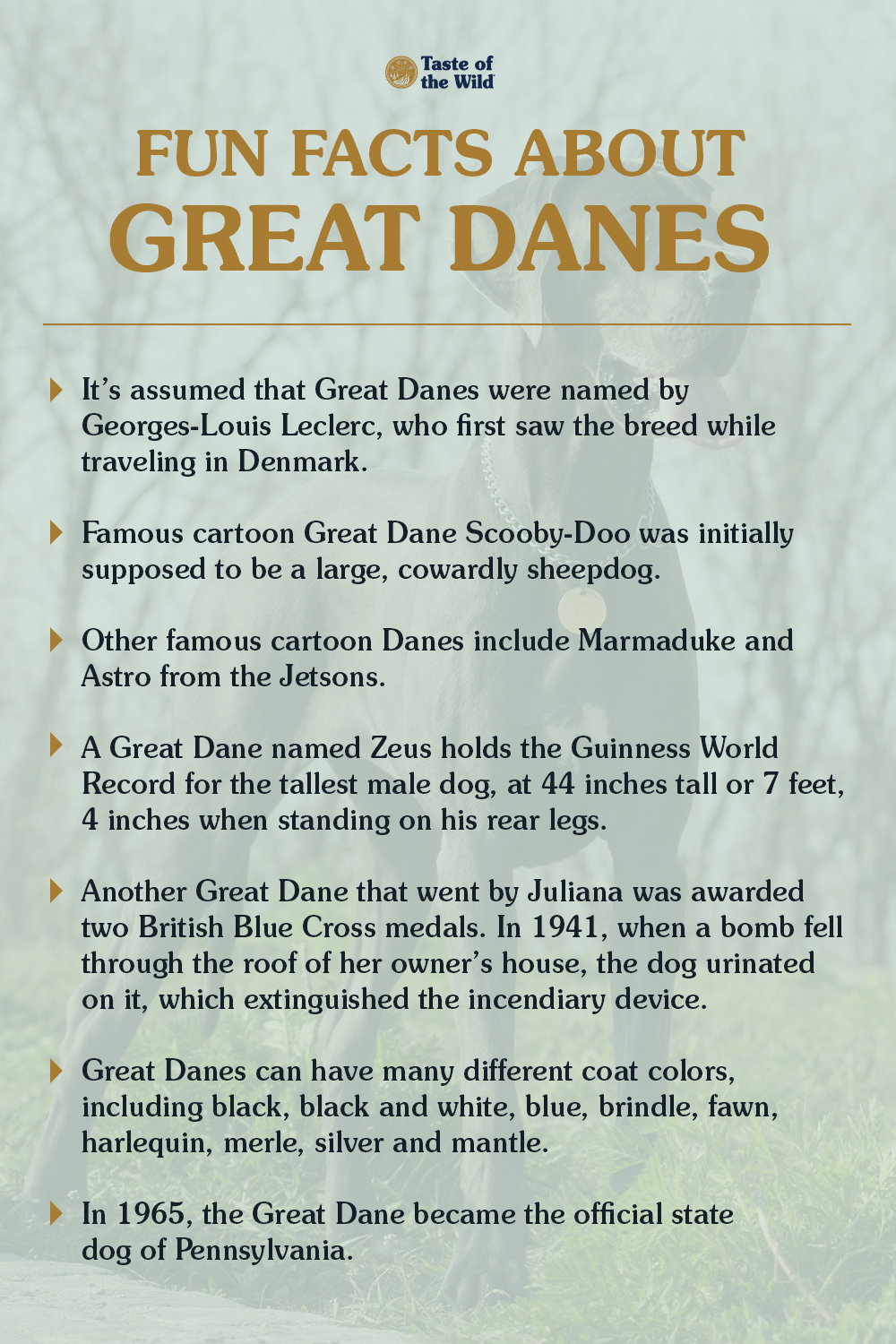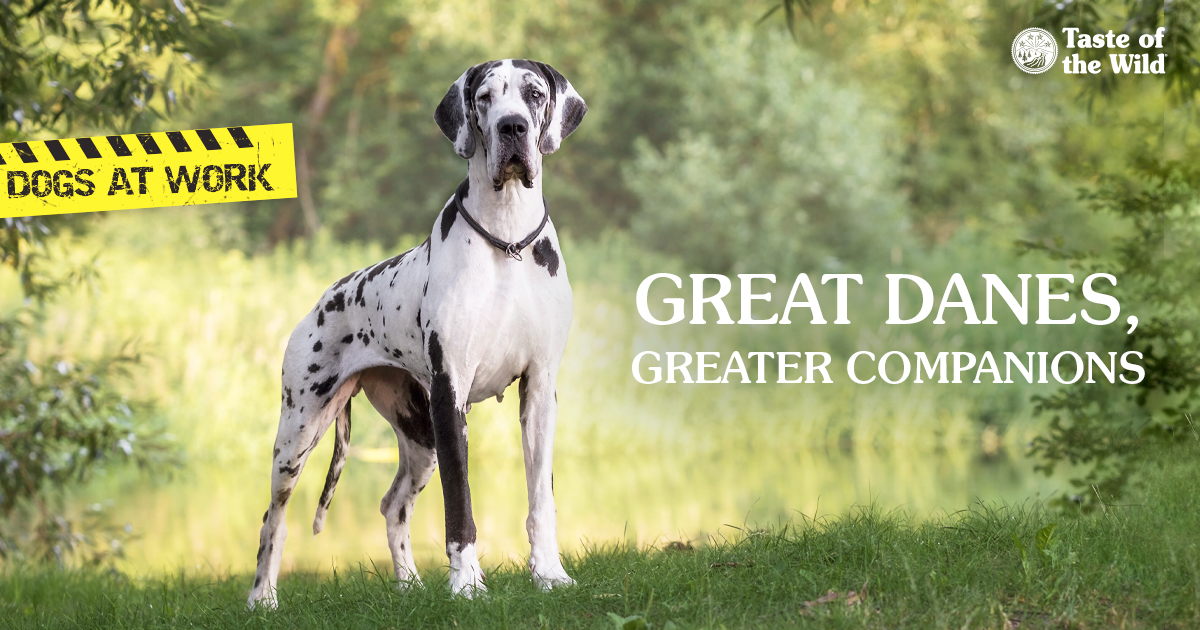Although you might assume Great Danes originated in Denmark, the breed traces its origins to Germany.
Centuries ago, German nobility bred this giant breed to hunt and kill wild boars. To create a powerful hunter, they combined the height of the Irish wolfhound, the speed of the greyhound and the muscular brawn of the English mastiff.
The result was a swift and ferocious dog, the sheer size of which made thieves think twice before approaching a carriage or stepping foot onto an estate. Over time, the noblemen began to call them Kammerhunde, or chamber dogs, and dressed them in velvet-lined collars as a reward for their protection and companionship.
As boar hunting became less popular, selective breeding was used to transform the hunting dogs of the past into the gentle giants they eventually became.
In 1880, the Germans banned the name “Great Dane” and called the breed “Deutsche dog” or “German dog,” at the same time founding the Deutsche Doggen Club of Germany. Some English-speaking countries still tend to call the breed by its original name.
Today, the breed is generally seen as a companion pet, but their typically gentle demeanor makes them perfect for work as a therapy or service dog. Surprisingly, Danes can excel in agility, weight pulling, tracking and obedience.

The information in this blog has been developed with our veterinarian and is designed to help educate pet parents. If you have questions or concerns about your pet's health or nutrition, please talk with your veterinarian.

